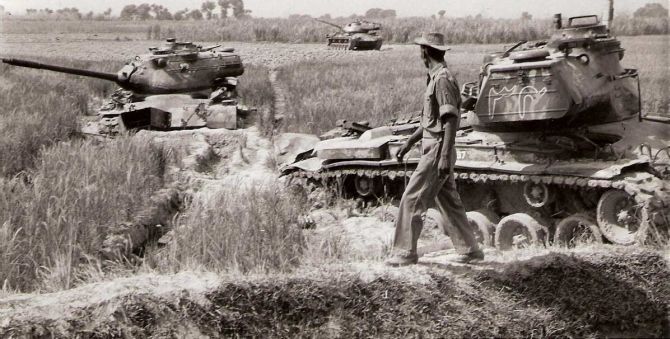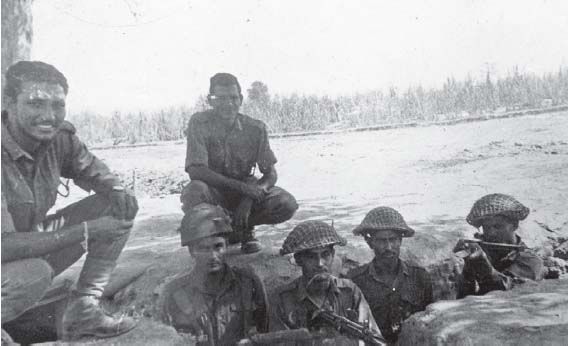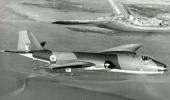The competition for the worst or most perilous 10 years has always been between the 1960s and the 1980s, points out Shekhar Gupta.

In his reply to the no-confidence motion last month, Prime Minister Narendra D Modi brought back two vital, contentious and tragic turning points in India's national security history.
The first, in March 1966, was the use of the Indian Air Force aircraft to strafe Aizawl -- then a district headquarters and now the capital of Mizoram -- to drive out insurgents.
And second, Operation Blue Star, which resulted in the destruction of the Akal Takht, the seat of Sikh spiritual and temporal power located in the Golden Temple complex.
It is hard politics, and the prime minister is within his rights to employ arguments and slices of history that make his case best.
Even those that make him sound more like the liberals his party doesn't particularly admire, especially on national security issues.
Nevertheless, it gives us an opportunity to raise and explore yet again one of the oldest questions in our national security debate: Which has been the most dangerous decade for India since Independence? The competition for the worst or most perilous 10 years has always been between the 1960s and the 1980s.
The Mizoram air raids marked the first, and Operation Blue Star the second.
My choice for the most troubled decade has always been the 1960s. A caveat is in order though.
Nobody can understate the perils of the 1980s, which most of the current generations up to the millennials have lived through.
There was the radical insurgency in Punjab, the return of terror in Kashmir, killings of Hindus in both states, Operation Blue Star, mutinies in the Indian Army's Sikh units, massacres of Sikhs in Delhi and elsewhere, the Bhopal gas disaster, a near-war with Pakistan over Exercise Brasstacks, a rough stand-off with the Chinese over Sumdorong Chu that took almost a decade to resolve, IPKF operations in Sri Lanka and unstable internal politics, especially post-Bofors.
Things were, however, so much rougher for a much, much weaker India in the 1960s that those 10 years must be the most touch-and-go in our independent history.
The sudden rise of the Mizo insurgency exactly halfway through that tumultuous decade came at the worst possible time, even in a true crisis epoch.
Lal Bahadur Shastri died in Tashkent in January 1966.
Indira Gandhi took over as a totally inexperienced and unprepared prime minister formally that same month, India had just fought an economically withering full-fledged war with Pakistan just six months earlier, and the Mizo National Front proclaimed sovereignty.
There were fewer than two months between Shastri's death on January 11 and March 6, when the rebels were on the verge of storming the Assam Rifles battalion headquarters in Aizawl.
We will be going back and forth, surveying that period.
Because there lie many lessons not just on national security, internal and external, but also on how our leaders handle these.
And more importantly, how critical internal politics is to national security, stability and cohesion.
The country, borders and neighbours that Jawaharlal Nehru's government had inherited from the British were unstable, unsettled and menacing.
While Pakistan was already a military enemy from 1947, China had begun to loom on the strategic horizon within a decade.
By the mid-1950s, the Naga insurgency had begun.
If anything, Nehru had taken too long to send in the Army, in the hope that talks would settle the issue.
That's how, generally, the crisis was allowed to fester in the 1947-1952 period.

By 1957, the fight was on, and in fact, the first concerted effort to resettle tribal people from distant and isolated hamlets into 'secure' villages close to Indian Army units had begun.
This was the original atrocity in the name of creating 'Protected and Progressive Villages' (PPVs).
Terrible excesses and human rights abuses occurred, although the order of the day issued by the then chief of army staff (CoAS) said exactly the opposite: They are our own people.
As the relationship with the Chinese deteriorated, the Dalai Lama escaped to India, Beijing became a patron of the Naga rebellion, and the first armed clash took place between Indian troops (the CRPF) and the Chinese PLA on October 21, 1959, in Hot Springs, exactly the region that is 'hot' in Eastern Ladakh today.
That set up the decade that was to come.
We can look at each year by turn.
In 1960, Naga rebels and the Indian Army were fighting a full-fledged guerrilla war, and its peak of sorts was the shooting down of an IAF Dakota dropping supplies to an Assam Rifles unit that was under siege and in danger of being overrun by the guerrillas in the village of Purr.
The pilots made a crash landing in a paddy field in blinding rain and were all taken captive.
While the five Indian Army men in the back of the plane were released soon afterwards, the four IAF officers were held captive for 21 months.
The Nagas held such sway that they were even able to smuggle a British journalist, Gavin Young of The Observer, into territory controlled by them to interview the crew led by Flight Lieutenant A S Sangha.
A little factoid: Sangha was the brother-in-law (wife's brother) of actor Dev Anand.

With the army already engaged in this brutal bush war and the Chinese danger rising, Nehru launched a three-service operation to liberate Goa in December next year.
That accounts for 1961 in our chronology of a troubled decade.
The war with the Chinese and the debacle marked 1962.
Seeing India as defeated and weak, the Pakistanis were stirring trouble in Kashmir now.
So the so-called Hazratbal incident (the theft of the holy relic) put the Valley on edge in 1964.
In 1964, Nehru died in harness with no succession planning.
Shastri took over as a compromise candidate, and we cannot forget that he faced three no-confidence motions, although he was in power for just about 19 months.
The following year, 1965, saw the Kutch conflict in April; this was like a mere trailer of the bigger action 'show' that would unfold later in the year, the 22-day war that began in Kashmir and ended in Punjab.
Shastri died at the start of 1966. By this time, the Naga insurgency was at its peak, Mrs Gandhi was seen as weak and the Mizo insurgency had begun.
There was much other trouble underlying the national crisis then.
The Punjabi Suba movement always had a radical fringe.
In 1966, a compromise was made and Punjab was split on linguistic basis.
But not before leaders like Master Tara Singh and Sant Fateh Singh (later Darshan Singh Pheruman) led multiple fasts and protests.
It was also still the period when Dravidian politics had a strong separatist impulse.
This was affirmed to me forthrightly by M Karunanidhi in an interview.

All of this was playing out in a decade of multiple famines, crop failures, the humiliation of food aid through PL-480 with a mostly hostile America and an economic downside.
But 1967 brought no respite. It was a major skirmish with China in Nathu La, and the bright spot was that the Indian Army got the better of them in those exchanges.
In the general election that year the Congress suffered heavy reverses, further weakening Mrs Gandhi.
By the next year, a crisis was building in the Congress.
Mrs Gandhi split it in 1969, took a heavy leftward shift and, in a way, provided a fitting end to that terrible decade.
Of course, the crisis in Pakistan's internal politics, the crackdown on its eastern wing, led India into another war just a year later.
It was a combination of all of these crises that led American political scientist Selig Harrison to write his famous (infamous?) India: The Most Dangerous Decades.
He pretty much foresaw India not being able to withstand these pressures, external and centrifugal, and breaking up.
In the following 50 years, we Indians have not only proven him entirely wrong, but grown stronger by the decade.
Never mind the 1980s. And never mind that unfortunate 1966 week in Mizoram.
By special arrangement with The Print
Feature Presentation: Aslam Hunani/Rediff.com











